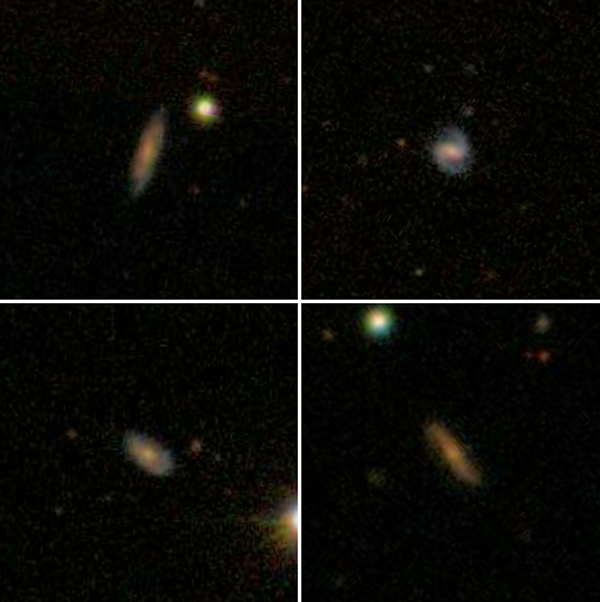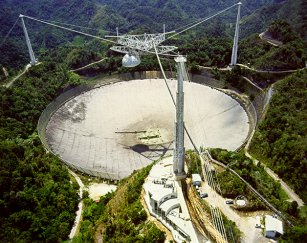Researchers from Swinburne University of Technology in Melbourne have detected the faint signal emitted by atomic hydrogen gas in galaxies 3 billion light-years from Earth - 500 million light-years further away than we've ever managed to see the gas before.
Using the world's largest telescope, the Arecibo radio telescope in Puerto Rico, the researchers found a unique population of almost 40 galaxies hosting huge reservoirs of hydrogen gas up to 3 billion light-years away.
Hydrogen gas is the fuel that's used to form new stars, like our Sun, and the new galaxies contain more between 20 and 80 billion times the mass of our Sun in atomic gas.
The discovery will help scientists find out more about galaxy formation.
"Atomic hydrogen gas is the fuel out of which new stars are formed, hence it is a crucial component to study if we are to understand how galaxies form and evolve," said Barbara Catinella, who led the research, in a press release.
"Because of the limitations of current instruments, astronomers still know very little about the gas content of galaxies beyond our local neighbourhood."
 Images of four of the distant galaxies observed. Credit: SDSS
Images of four of the distant galaxies observed. Credit: SDSS
Right now, galaxies filled with hydrogen gas are rare, but scientists believe that they were more common when the Universe was younger.
However, it's hard to study the gas content of hydrogen gas of these early galaxies as it's difficult to detect the signals from great distances. But using the 305-metre diameter Arecibo radio telescope the team were able to "hear" them from 500 million light-years further away than we ever have before.
"The signals are not only weak, but they appear at radio frequencies that are used by communication devices and radars, which generate signals billions of times stronger than the cosmic ones that we are trying to detect," said Catinella in the release.
The Square Kilometre Array, a joint project between Australia and Africa, will go online in 2018, and will help scientists to detect hydrogen gas in even older galaxies.
This research offers some insight into the types of galaxies that they'll be able to find.
"The outcome vastly exceeded our initial expectations," said Catinella in the release.
"Not only did we detect radio signals emitted by distant galaxies when the Universe was three billion years younger, but their gas reservoirs turned out to be unexpectedly large, about 10 times larger than the mass of hydrogen in our Milky Way. Such a huge amount of fuel will be able to feed star formation in these galaxies for several billion years in the future."
Further research will now look into why these galaxies haven't yet converted this gas into stars already.
The results are published in the Monthly Notices of the Royal Astronomical Society.
Want to explore the Universe? Find out more about studying at Swinburne University of Technology.
